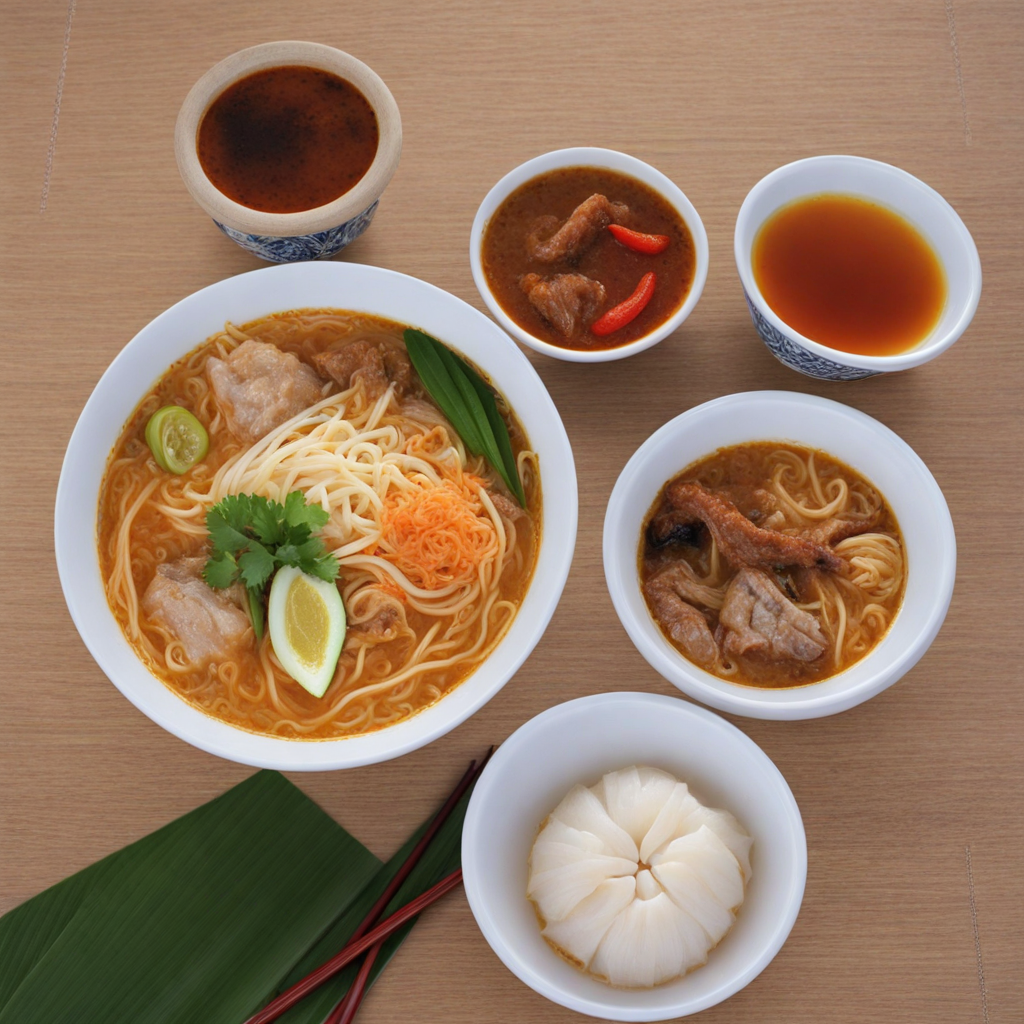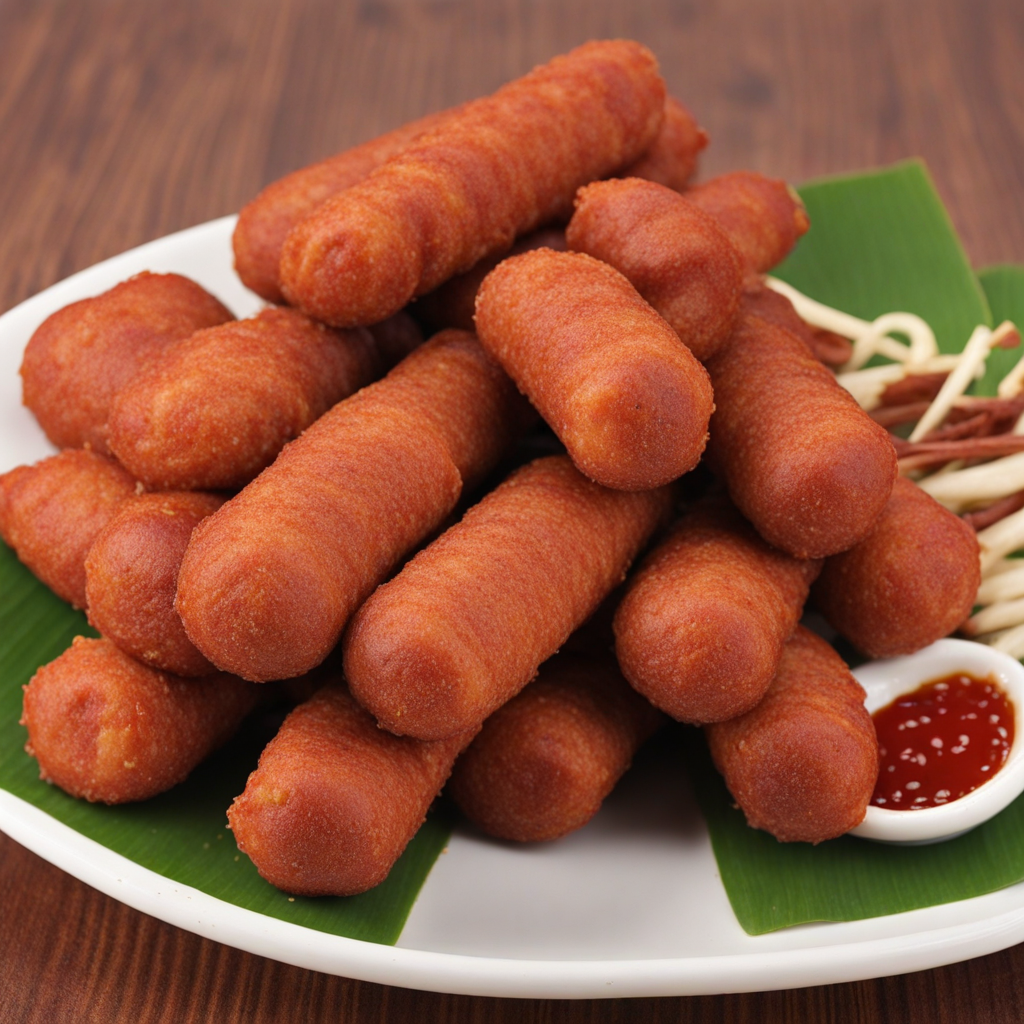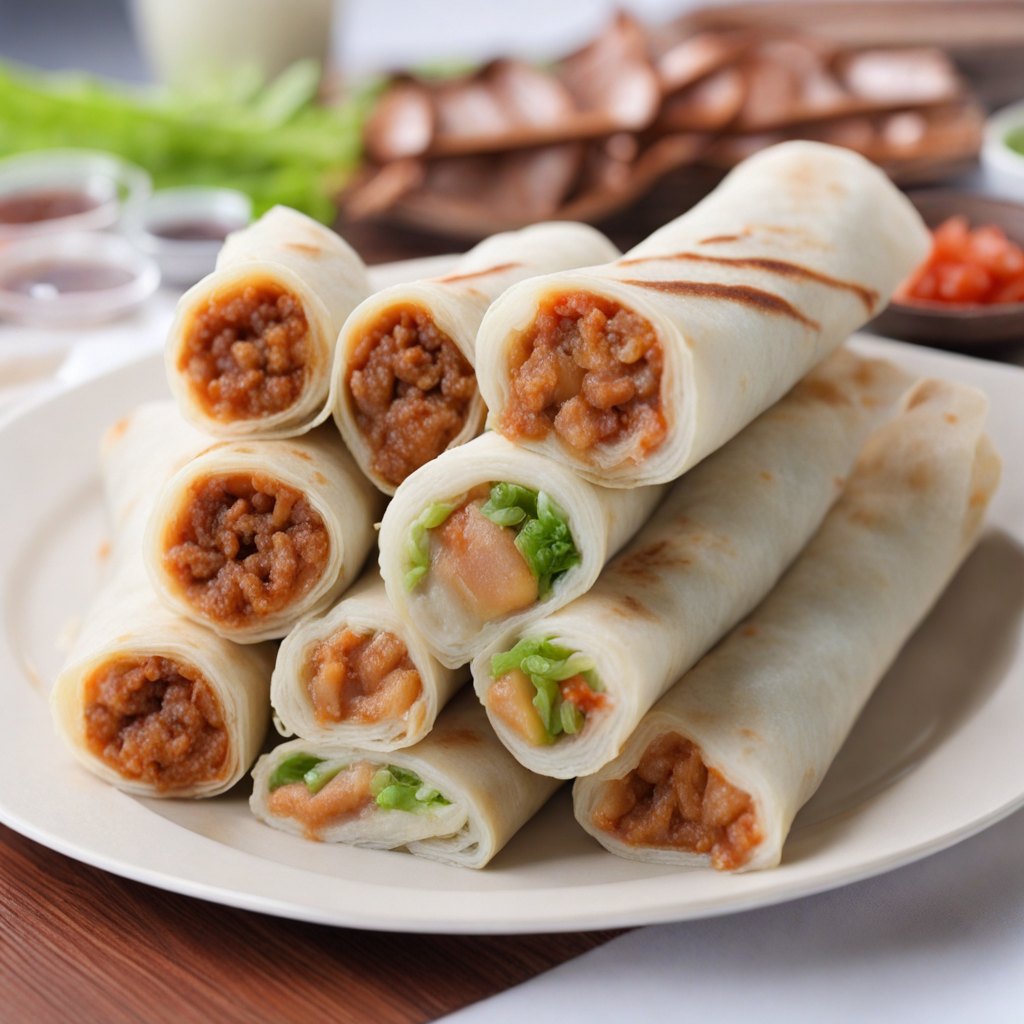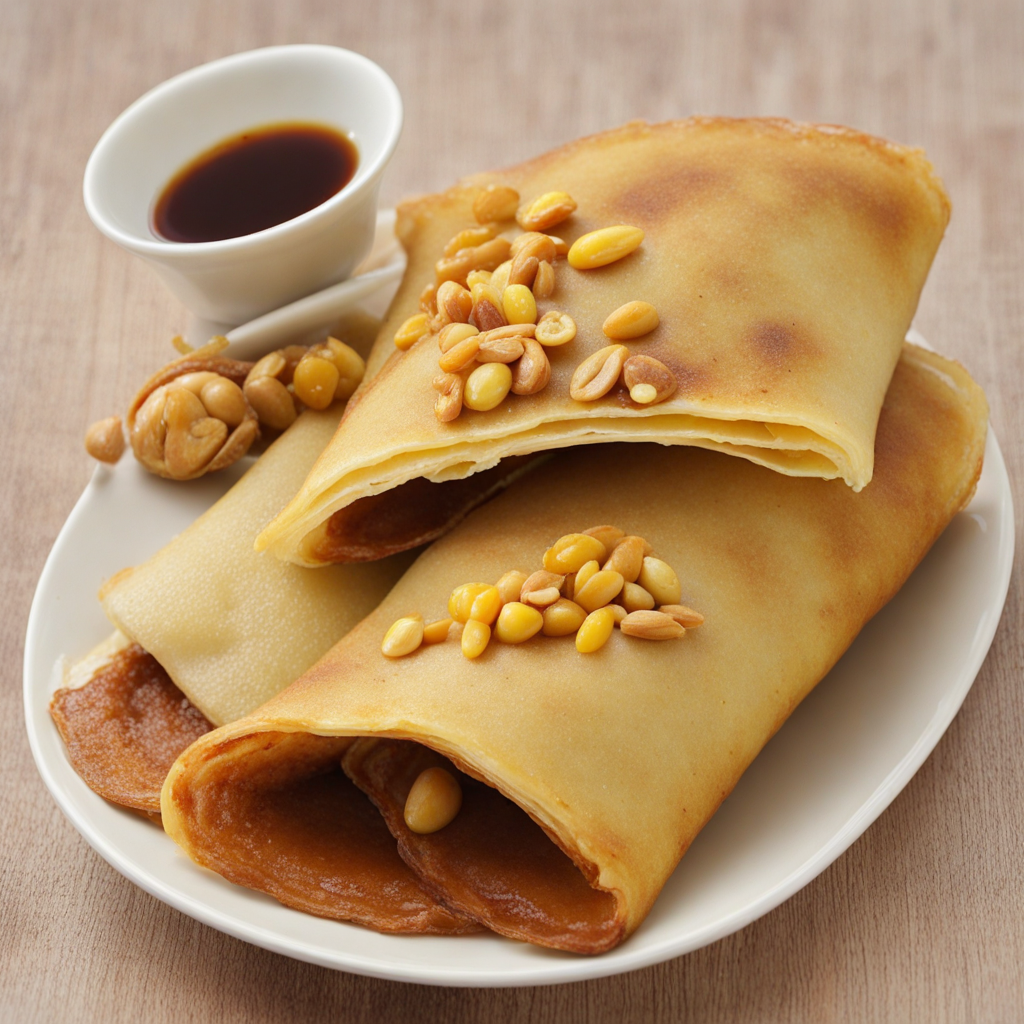Sarawak Laksa
Sarawak Laksa is a vibrant and aromatic dish hailing from the Malaysian state of Sarawak on the island of Borneo. It is a unique fusion of Chinese and Malay culinary traditions, characterized by its rich, spicy coconut milk-based broth. This dish typically features a blend of fresh herbs and spices, including lemongrass, galangal, and sambal, which come together to create a flavor profile that is both complex and comforting. The broth is often cooked slowly to allow the flavors to develop, resulting in a deeply satisfying and fragrant soup that warms the soul. At the heart of Sarawak Laksa is its signature rice vermicelli noodles, which are soft and slippery, perfectly complementing the creamy broth. The dish is usually topped with a variety of fresh ingredients, such as shredded chicken, prawns, and bean sprouts, adding texture and depth to each bite. A sprinkle of fresh coriander and a squeeze of lime juice elevate the dish further, providing a burst of freshness that balances the richness of the soup. The vibrant colors of the garnishes also make for an enticing presentation, inviting you to dig in and explore its flavors. What sets Sarawak Laksa apart from other types of laksa found in Malaysia is its distinct spice blend and the use of coconut milk, which gives it a creaminess that is both indulgent and satisfying. Each bowl is a harmonious blend of spicy, tangy, and savory elements, making it a dish that is truly unforgettable. Whether enjoyed as a comforting meal at home or as street food from a bustling hawker stall, Sarawak Laksa promises a delicious adventure for those eager to discover new tastes.
How It Became This Dish
The History of Sarawak Laksa: A Culinary Journey from Borneo Origin and Ingredients Sarawak Laksa, known locally as "叻沙" (laksa), is a beloved dish hailing from the Malaysian state of Sarawak on the island of Borneo. This vibrant and aromatic noodle soup is a testament to the rich cultural tapestry of Malaysia, showcasing the influences of various ethnic groups and culinary traditions. The dish is characterized by its unique blend of flavors, combining spicy and savory elements with a creamy coconut milk base, often adorned with plump prawns, shredded chicken, and fresh herbs. The origins of Sarawak Laksa can be traced back to the indigenous Malay and Chinese communities that settled in the region. The word "laksa" itself is believed to have derived from the Persian word "lakhsha," which means "noodle." This etymology hints at the historical trade routes that brought various culinary influences to Southeast Asia, particularly during the 15th century when trade flourished between Chinese merchants and local Malay populations. While several variations of laksa exist across Malaysia, Singapore, and Indonesia, Sarawak Laksa has its own distinctive identity. It is often differentiated from Penang Laksa and Asam Laksa, which are sour and fish-based, by its use of a rich and creamy broth, making it more akin to a curry than a soup. The primary ingredients include rice vermicelli, prawns, shredded chicken, bean sprouts, and a blend of spices such as lemongrass, turmeric, and chili. The dish is often garnished with fresh coriander and a dollop of sambal, adding layers of flavor that elevate the dining experience. Cultural Significance Sarawak Laksa is more than just a dish; it embodies the cultural heritage of Sarawak, a region known for its ethnic diversity, including Malay, Chinese, Dayak, and Indian communities. Each group has contributed to the culinary landscape, resulting in a fusion that is unique to the area. The dish is often served during festive occasions, family gatherings, and community events, symbolizing unity and celebration among the various ethnic groups. In Sarawak, food is an integral aspect of social life. Sarawak Laksa is often enjoyed as a breakfast item or a hearty brunch, with families gathering around the table to share the dish. It has become a cultural staple, representing the identity of Sarawak and its people. The dish is frequently featured in local food festivals and culinary events, showcasing the pride that locals take in their culinary heritage. Moreover, Sarawak Laksa has gained recognition beyond the borders of Malaysia. It is often one of the first dishes that tourists seek out when visiting Sarawak, making it a vital component of the region's culinary tourism. The dish has become a symbol of Sarawak’s rich multicultural identity, attracting food enthusiasts and travelers eager to experience authentic local flavors. Development Over Time As Sarawak Laksa evolved over the decades, it has adapted to changing tastes and influences while retaining its traditional roots. The dish has undergone various transformations, particularly with the introduction of modern cooking techniques and ingredients. In recent years, chefs and home cooks alike have experimented with the recipe, adding new elements such as seafood, tofu, and even vegetarian options to cater to a broader audience. One notable development in the popularity of Sarawak Laksa is the emergence of instant versions of the dish. These instant noodles have made the flavors of Sarawak Laksa accessible to those who may not have the opportunity to visit the region. While purists may argue that these instant varieties cannot replicate the authenticity of a freshly prepared bowl, they nonetheless play a role in popularizing the dish and introducing it to new generations. Additionally, the rise of social media and food blogging has further amplified the exposure of Sarawak Laksa. Pictures of the beautifully presented dish, often adorned with a vibrant array of herbs and spices, have captured the attention of food lovers worldwide. This digital revolution has inspired a new wave of culinary explorers and has encouraged chefs to elevate their presentations, leading to a fusion of traditional and contemporary styles. Furthermore, the globalization of food culture has led to the incorporation of international flavors into Sarawak Laksa. Chefs may experiment with different types of noodles, broths, or garnishes, creating new interpretations that reflect the evolving palate of diners. This creative freedom has allowed Sarawak Laksa to remain relevant while paying homage to its traditional roots. Conclusion In conclusion, Sarawak Laksa stands as a culinary emblem of the cultural richness of Borneo, reflecting the history, diversity, and traditions of its people. Its journey from a humble noodle soup to a celebrated dish on both local and global stages is a testament to the resilience and adaptability of culinary traditions. As Sarawak Laksa continues to evolve, it remains a beloved comfort food for many, intertwining the past with the present and ensuring that its legacy endures for generations to come. Whether enjoyed in a bustling hawker center, a family kitchen, or a fine dining restaurant, Sarawak Laksa is more than just a meal; it is a vibrant narrative of a community that celebrates its heritage through food. As more people discover the flavors of Sarawak, the story of Sarawak Laksa will continue to unfold, inviting others to partake in its rich and delicious history.
You may like
Discover local flavors from Malaysia







